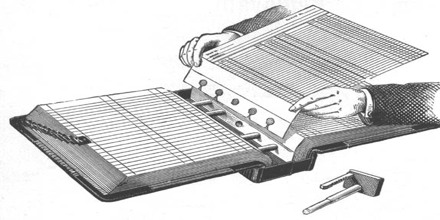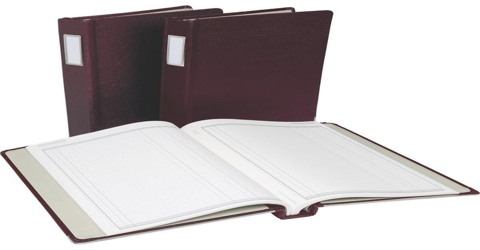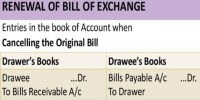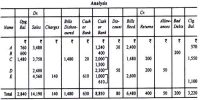Loose-leaf Ledger
In a loose-leaf ledger, appropriate ruled sheets of thick paper are introduced and fixed up with the help of a binder. Whenever necessary additional pages may be inserted, completed accounts can be removed and the accounts may be arranged and rearranged in the desired order. Therefore, this type of ledger is known as Loose-leaf Ledger. The loose sheets are fitted into metal hinges of screws, which allow pages to be taken out or additional pages to be inserted as and when necessary.

Loose sheets are used while preparing the ledger. The ledger may also be fitted with a lock. When a leaf or page is inserted or removed from it, the book is unscrewed and the relevant leaf put in or taken out. A separate sheet is allotted to each account. In the case of large accounts, many sheets may be used. The accounts may be arranged and rearranged in any order desired – alphabetical, numerical, or geographical.
Loose-leaf Ledger also called a book of final entry, a ledger records classified and summarized financial information from journals (the ‘books of first entry’) as debits and credits, and shows their current balances. In manual accounting systems, a ledger is usually a loose-leaf binder with a separate page for each ledger account.
Advantages of Loose Leaf Ledger System:
- Dead or closed accounts can be removed at any time.
- It is not necessary to open new ledgers at the commencement of each balancing period.
- The insertion of new leaves or the removal of dead or closed accounts does not affect the order.
- At the time of balancing, the ledger may be divided between several clerks so that the work of extracting balances may be made quickly.
- A transfer ledger is used for keeping old records.
Disadvantages of Loose Leaf Ledger System:
- The leaves may be lost or misplaced unintentionally.
- The leaves may be intentionally destroyed or substituted with a view to committing some fraud already committed.
















